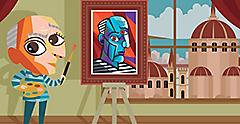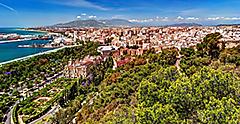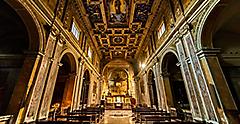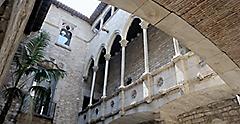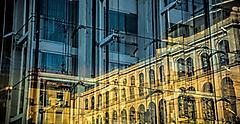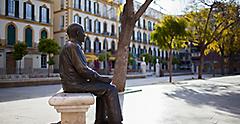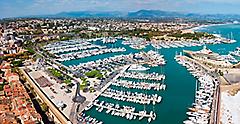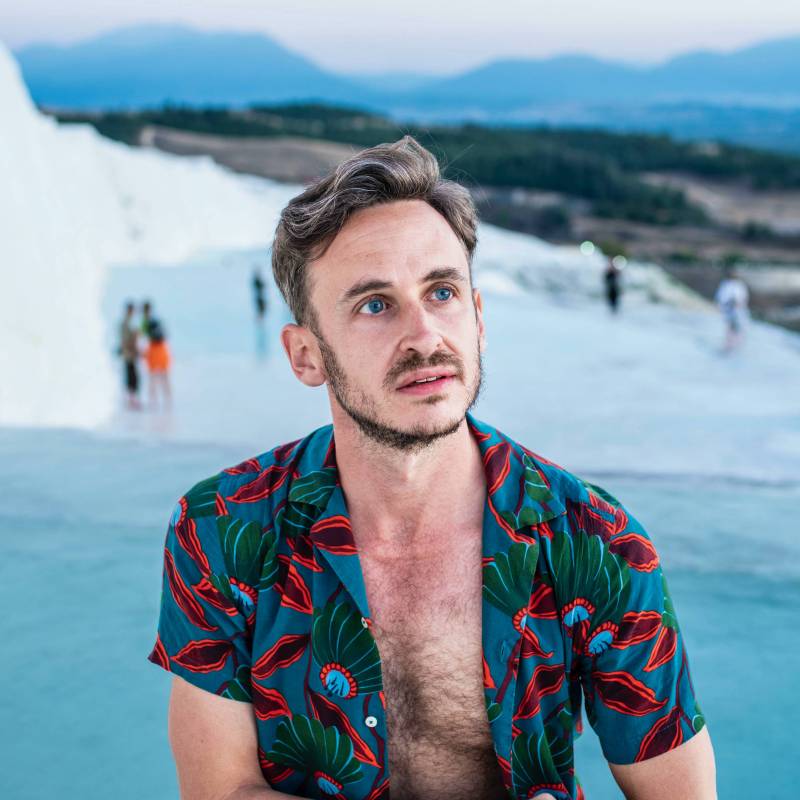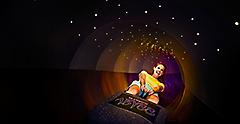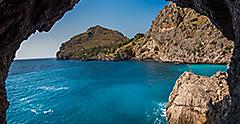By Robert Schrader | Published on January 11, 2024
The Influences That Made Pablo Become Picasso
Pablo Picasso was born in Malaga, Spain, in 1881. A lesser-known fact? "Pablo Picasso" was a heavily shortened version of his name; the full version is more than 23 words. It was a fittingly complex moniker for a boy who ended up being gifted beyond his years. Although Picasso's formal art training didn't start until he was seven, he was something of a prodigy, displaying profound artistic skills evident even in the sketches he made as a toddler.
The first and most profound of Pablo Picasso's influences was the artist's father himself, Don José. The elder Picasso was a painter in his own right, and it's said that as Picasso's father observed his young son drawing and later painting, he quickly recognized the depth of his son's talent — including that it was beyond his own. The family moved around Spain as Don José took different jobs, and they eventually settled in Barcelona where Picasso gained admission to the San Fernando Academy of Fine Arts at only 13 years of age. In fact, when you visit Barcelona today, you can book a Picasso tour as an onshore excursion.
As Picasso's fortunes in life began to improve, his art brightened. This began with his "Rose Period," defined by coral and salmon hues, as well as happier imagery like acrobats and jesters. Picasso followed this up with primitivism, a period inspired by African art he began seeing in museums in Paris. Looking back now, the boldness of the work is evident — it lifted bright colors and striking lines from African masks and other carvings and portrayed human subjects in a more primal way — though his contemporaries mocked and criticized him for pieces such as "Les Demoiselles d'Avignon."
They wouldn't be laughing long: Picasso's next stylistic movement, cubism, changed art forever. Starting around 1907 with analytical cubism, this art style broke real-world objects down to their component parts. Picasso became world-famous for the art he created during this period, which exaggerated geometry, disregarded symmetry and presented the world in a way that no one else (besides, perhaps, his creative partner Georges Braque) had ever even thought of. It depicted people as looking disassembled and unreal, and yet oddly relatable and authentic at the same time.
Cubism Was Just The Beginning Of Picasso's Influence On Art
Many of Pablo Picasso's influences on art can be traced back to his foundation work in cubism, but they don't end there. After World War I, Picasso joined the neoclassical movement, which sought to restore order to the continent after what was to that point the bloodiest conflict in history. Although the works Picasso created during this brief period of his career weren't as identifiable as his others, his participation in the movement did serve to establish him as a mainstream art superstar.
Indeed, it was during his surrealist period that immediately followed neoclassicism in the late 1920s that Picasso arguably began to pick up on the threads of his earlier periods. With cubism, he had his own indigenous artistic language for subverting the realism that had undergirded his neoclassical works. The most famous example of his work during this time was the Bathers series, defined by exaggerated body parts in the context of a day at the beach. It was during this period that he met his first wife Olga, a ballet dancer whom he married in 1918 and with whom he had one child.
Picasso's zenith, both in terms of his art and his cultural commentary, came in 1937 in the form of "Guernica," which many regard as his masterwork. The huge, wall-sized work, which debuted at the Paris World's Fair that year, is Picasso's depiction of the German bombing of Guernica, Spain, during the Spanish Civil War. Hearkening back to all of Picasso's phases but most notably cubism, the ambitious monochrome presents both stark reality and a level of violence and cruelty that's almost indecipherable, eliciting raw emotion and difficult questions in those who see it.
One of the most interesting Pablo Picasso facts: Picasso refused to allow "Guernica" to move to Spain until the country adopted democracy, which ended up happening in 1981, nearly a decade after his death. Politics were always one of Pablo Picasso's influences, and "Guernica" was but one of the many ways Picasso used his art to make a statement. Notably, Picasso lived in German-occupied Paris and dealt with regular harassment by the Gestapo because his work did not conform to Nazi ideals of beauty.
Picasso's art continued to evolve during the following decades, which saw him write poetry and plays and, most notably, move into sculpted art. This was not surprising, of course, given that cubism itself had been a revolutionary form of constructed sculpture. Interestingly, one of Picasso's most notable sculptures is located not in Europe but in Chicago, where it has stood since 1967. Known simply as the "Chicago Picasso," it stands 50 feet tall in Daley Plaza, not far from Chicago City Hall.
Other Interesting Facts About Pablo Picasso
Picasso's personal life was in many ways as captivating as his art. He lived until 1973 and died in France at the age of 91. While this might not seem like an interesting fact about Pablo Picasso, his long life is remarkable compared with the untimely deaths of many of his contemporaries.
For me, one of the most compelling Pablo Picasso facts is that while he was known primarily as a painter, his influence on art was arguably even more important as it related to sculpture. This was both because of the fact that synthetic cubism literally "sculpted" together pieces of things he found elsewhere and the fact that Picasso's later-career foray into sculpture ended up being influential. The work he created was the main reason for this, although his level of celebrity by that point in his life certainly didn't hurt.
These days, Picasso's lasting mark on the world is so great that you don't even need to know the name of a single piece of his art to feel the weight of his name when it's mentioned. Likewise, while Picasso will forever be associated with high art, the fact that the word "collage" is now mainstream is thanks to him. Pablo Picasso's influence on art is so prevalent today that making collages is something even children do. So, if you've ever pasted together things you've found elsewhere into a creation of your own, you can consider yourself a student of Picasso!
Where To See Picasso Paintings
As you travel the world, you may be wondering where to see Picasso paintings in real life. When you cruise to Europe, the most popular place to see Picasso's art is at Madrid's Museo Nacional Centro de Arte Reina Sofía, located in the city's trendy Lavapiés district not far from the Puerta de Atocha train station. Note that while you can't take pictures inside the room where "Guernica" itself is housed, you can photograph all the other Picasso works throughout the museum. Numbering about 100 in total, these include those within the permanent cubism room as well as any rotating exhibitions that happen to feature Picasso.
Madrid's other large art museum is Museo Nacional del Prado. The museum's collections once inspired a young Picasso on his trips to the capital, and it recently added one of his own works (1943's "Buste de Femme 43") to its collection. Appropriately, the largest Picasso museum in Spain is located in Barcelona, where Picasso laid the foundations for his career. The Picasso Museum houses around 4,000 Picasso works.
The collection of the Musée Picasso, a sun-soaked French Riviera idyll where Picasso spent a considerable amount of time, is only a fraction as extensive as its counterpart in Paris. However, what's compelling about this place is both its architecture (a medieval castle) and the fact that Picasso once used the castle as his art studio. It was the world's first Picasso museum and contains art personally donated by both the artist and his second wife, Jacqueline. The most compelling work here is arguably "Le Baiser," an ambitious 15-painting series that breaks down the pleasure and emotion of a kiss.
If you're interested in tracing Picasso's roots without necessarily seeing a large amount of art, you could head down the Mediterranean from Antibes to Malaga, the artist's birthplace. In addition to another Picasso museum, which houses a comparatively modest 285 pieces of art, you can visit the house where Picasso was born (at 15 Plaza de la Merced), the church where he was baptized and even La Malagueta, a bullring that apparently inspired the brutality in some of Picasso's work.
Get Royal Deals, Sign Up Today

Getting There
Explore Our Most Affordable Itineraries
Admire the works of Picasso when you book a European cruise.
Related Articles
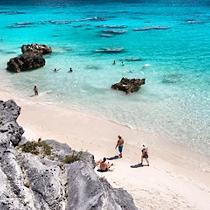
The Best Time to Visit Bermuda | Royal Caribbean Cruises
READ MORE

Girls and guys weekend trip ideas: How to plan a cruise getaway | Royal Caribbean Cruises
READ MORE

Best Long Weekend Getaways to the Bahamas on Utopia of the Seas | Royal Caribbean Cruises
READ MORE

Can You Take Days Off Without PTO? Here's What You Need to Know | Royal Caribbean Cruises
READ MORE

